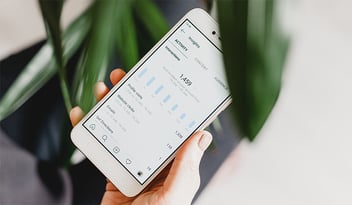The difference between lead tracking and conversion tracking
When it comes to tracking analytics, most businesses confuse lead tracking and conversion tracking data. Inaccurate analytics lead to wasted efforts and money, which translates to time and budget that could be allocated to other areas of the business that would move the needle.
Business owners and marketers must understand the core differences between lead tracking and conversion tracking. Let’s take a closer look at leads and conversion and their role in your marketing efforts.
What are marketing leads?
Simply put, leads are prospective customers who have connected with your brand and are interested in your offers. They’re spending more time engaging with your content, asking questions, and repeatedly visiting your website or social media channels. They want to learn more about your offers before they make a purchase.
It's important to note that not all traffic on your website are leads. Leads have the potential of becoming a customer, while traffic are simply visitors who have come across your website by chance.
What are conversions?
The common misconception about conversions is they are defined as an official sale; however, this is not always the case. There are several ways to define a conversion, and it depends largely on your marketing campaign’s main goal.
While the ideal conversion is a prospect becoming a paying customer, micro conversions should also be closely monitored. For example, a customer clicks on your website and becomes intrigued with your products or services. They then add their email into your mailing list, where you send consistent emails as part of your content marketing strategy.
These prospects are then nurtured once they’ve given you permission to contact them about your offer. A micro conversion can lead to a sales conversion by providing potential customers with valuable and consistent content that keeps your brand top of mind when they are ready to make a purchase.
What is the difference between lead tracking and conversion tracking?
Lead tracking measures how many leads in your sales pipeline make it to an official purchase. Conversion tracking analyses the number and quality of the leads who have become paying customers. For example:
- You have ten leads for Marketing Campaign A
- You had a great campaign, and eight of those leads become paying customers
- However, five of those paying customers aren't happy with their purchase
- Two of those paying customers become repeat clients
- One customer wants a refund
Many companies mistake an 8/10 “conversion rate” as excellent, which it absolutely is. However, you targeted 1500 people, and six out of eight of those paying customers weren’t satisfied. Most companies stop at the 80% conversion rate and call the campaign a success, which is where brands miss the opportunity to improve their processes and offers.
Without effective lead tracking and conversion tracking systems in place, companies fail to produce quality leads and conversions and a better nurture process to nurture leads.
How can I improve the quality of my leads and conversions?
If you’re finding that the quantity and quality of your leads and conversions aren’t in line with your company’s goals, there are several ways to improve your strategy, including:
- Redefining your target market
- Doing further research on your target market’s pain points
- Speaking to your potential clients on what type of solution, service, or product they need
- Quantify the number of leads you want to generate
- Define what cold, warm, and hot leads are for your marketing campaign
- Define what a successful marketing campaign looks like for your company
- Analyze your tracking data and match them with your efforts and budget to determine if the campaign was effective
Final thoughts
Many businesses fail to understand the difference between leads and conversions, which is a significant indicator of why campaigns don’t bring results. Whether your goal is to generate more leads or increase your profit, it’s important to set specific goals so that you can effectively measure the data and optimize your efforts for a better outcome.
Article by Richard Walsh
As a certified inbound and content marketer, Richard believes in the need to create high-quality compelling content, that drives engagement and interaction. Richard has been developing brands and high-quality web experiences since 2001. Book a meeting with Richard to talk about your branding and marketing efforts.




